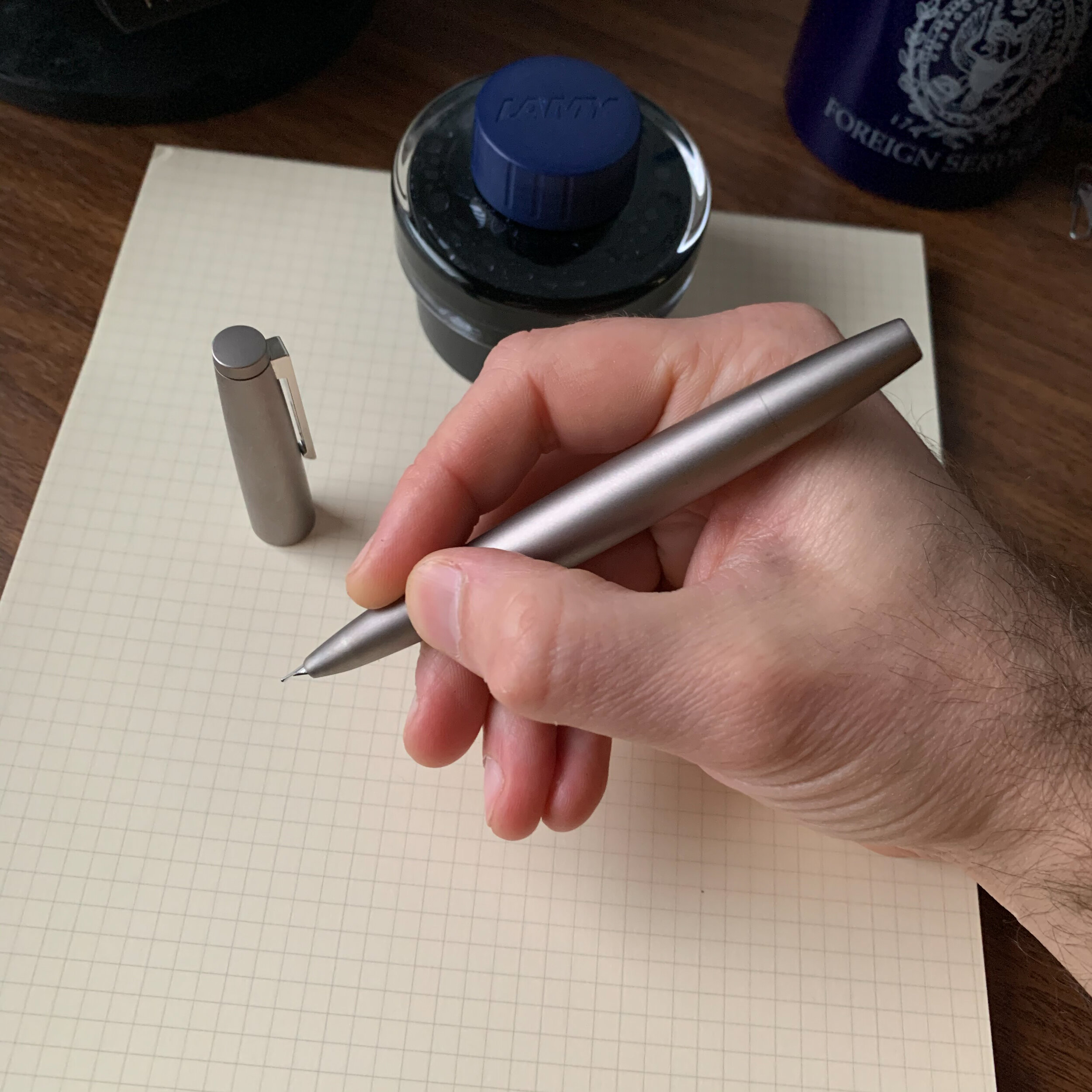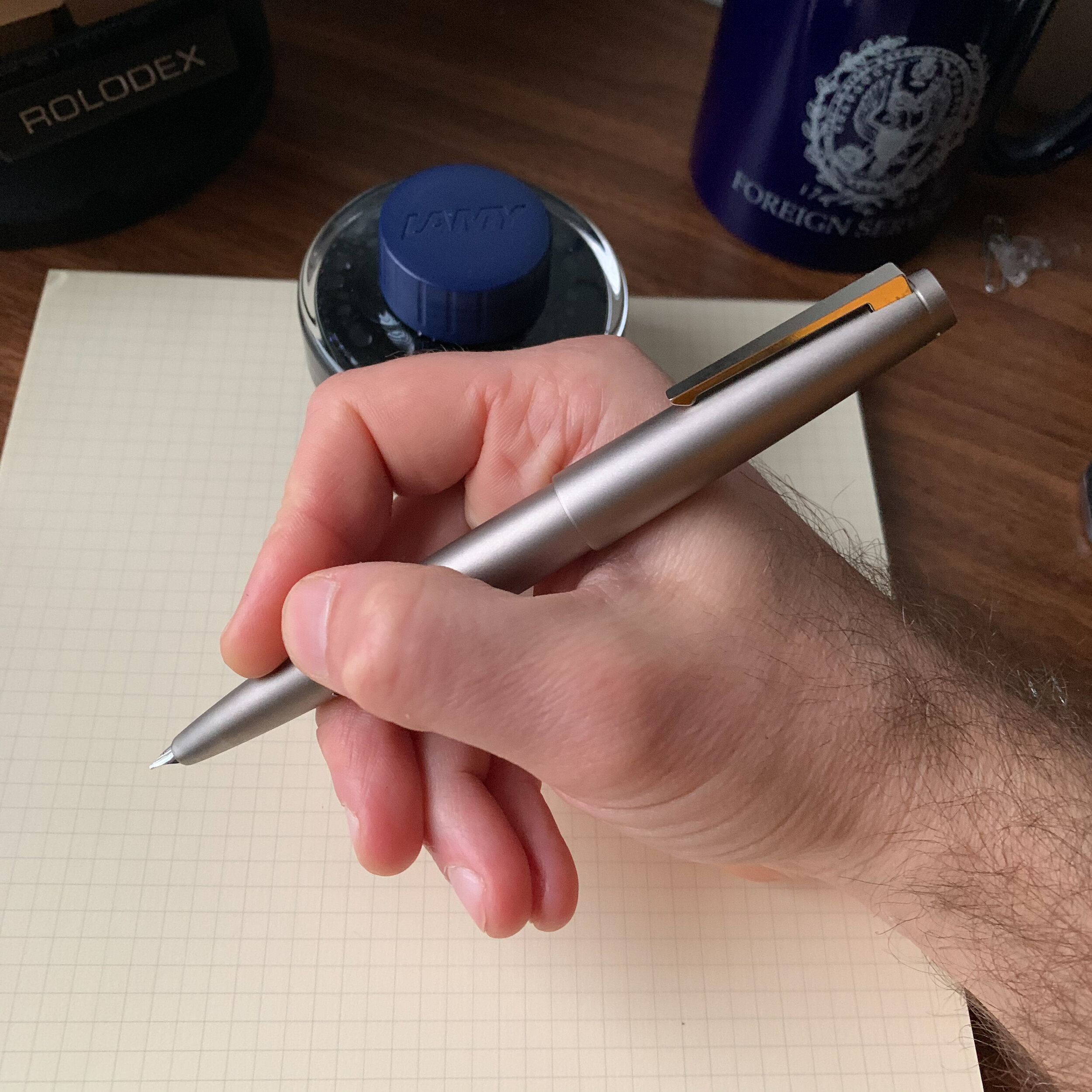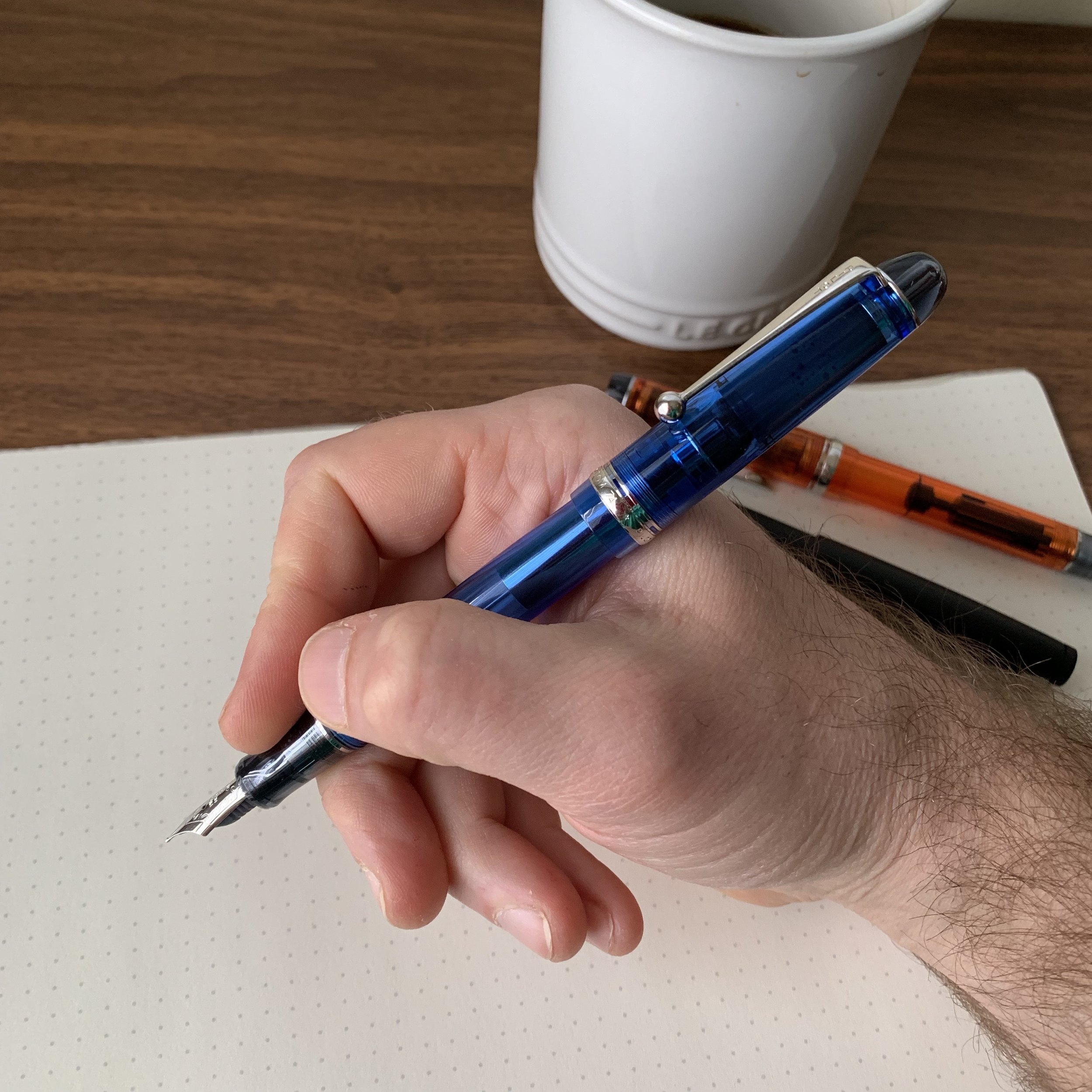Due to the combination of timeless design, ergonomics, and quality, the Lamy 2000 series tops my list of personal favorite writing instruments. I started with the Fountain Pen, next acquired the Ballpoint and Multi Pen, and then the Rollerball. But what about the Mechanical Pencil? Lamy offers both .5mm and .7mm mechanical pencil versions of the Lamy 2000 in the same brushed black Makrolon finish as the rest of the line, and I decided it’s long-past time to check it out.
From top, the Lamy 2000 4-Color Ballpoint / Multi Pen, the .5mm Mechanical Pencil, and the Ballpoint pen. You can also see different degrees of wear on the Makrolon as these pens/pencils are used and age. The Ballpoint dates to the 1980s, and is worn smooth. The multi pen is about 5-6 years old and starting to show signs of “break-in,” and the pencil is still brand new and therefore matte. I love the look of aged Makrolon!
In terms of design, the Lamy 2000 Mechanical Pencil offers no surprises - the form factor is more or less the same as the Lamy 2000 Ballpoint in terms of both look and dimensions. The differences are what you would expect: the standard metal knock is replaced by a Makrolon knock/eraser-cover engraved with a “5” or “7” on top to denote the lead width (a thoughtful detail, actually), and the tip of the pencil reveals a bit of the lead protector sleeve.
As with most mechanical pencils, the knock on the Lamy 2000 can be removed to expose an eraser and to refill the lead.
In the hand, the Makrolon (fiberglass-blend) pencil is of course both lightweight, balanced, and tactile. With a mechanical pencil, you need to pay attention to balance in particular, as an excessively front-weighted or back-weighted pencil can place pressure on the graphite and lead to frequent breakage. I had no such issue here, especially since I use the durable Uni Kuru-Toga or Pentel graphite in most of my mechanical pencils. (The stock Lamy graphite is also very good.)
In hand, this is a very lightweight mechanical pencil, which feels very much on par with both Lamy 2000 ballpoints (standard and multi pen).
While I have long adored Lamy’s 4-Color Ballpoint (the multi pen), the one knock on it (pun intended) is that it doesn’t include a mechanical pencil option like the Sailor Imperial Black. In my opinion, the next best thing is to have a matching mechanical pencil (or, as in my case, a full matching set ;)).
All the Lamy 2000 pens! (Well, most of them. I have more.)
Takeaways and Where to Buy
I’ve been a fan of the Lamy 2000 in all its iterations for well over a decade. The Lamy 2000 Mechanical Pencil is no exception, and if you’re a fan of either the overall Lamy 2000 design aesthetic or simply good quality mechanical pencils in general, this one deserves your consideration. As with other models of the Lamy 2000, we stock them directly in the T.G.S. Curated Shop, in both the .5mm and .7mm variations. The pricing on the Lamy 2000 Mechanical Pencil is around $55, which is the lowest price point of any pen or pencil in the Lamy 2000 range, making it a nice entry point if you would like to try the shape and feel before committing to a more expensive item.
The mechanical pencil is conveniently labeled “5” or “7”, depending on whether it’s the .5mm or .7mm version.
Further Reading on the Lamy 2000
With the mechanical pencil, I’ve now completed my review series on the standard black Makrolon Lamy 2000 models. If you’d like to read up on the other pens in the Lamy 2000 collection, as well as more backstory regarding the history and story behind this Bauhaus-inspired pen design, check out our reviews of the Lamy 2000 Fountain Pen (Workhorse Pens Series), Ballpoint, Rollerball, and 4 Color Ballpoint - Multi pen.
The Gentleman Stationer is supported entirely by purchases from the T.G.S. Curated Shop and pledges via the T.G.S. Patreon Program. This post does not contain third-party affiliate links or paid advertising.






